Who is Constantius II?
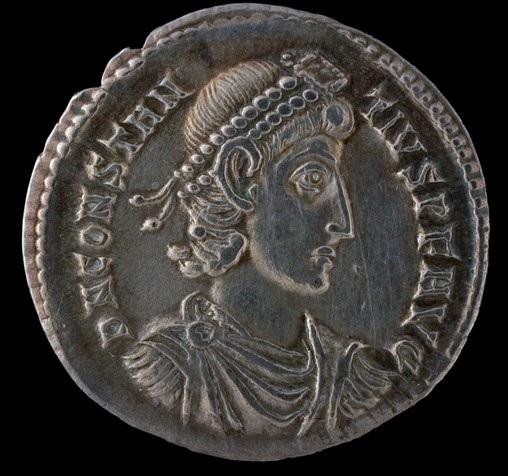
Rights to Wriston Art Center Galleries
Born in 317 AD, Constantius II was one of the four children of Constantine the Great. Constantine was the Roman emperor who established the city of Constantinople in the East, became a Christian, and ended the tetrarchy, a system of four rulers, two senior and two junior emperors. In place of the tetrarchy, Constantine the great established a hereditary dynasty, which is where Constantius II fits in. Although Constantine abolished the tetrarchy, he still made his sons junior rulers (or Ceasars) to assist in ruling the vast Roman empire. Constantius became a Caesar in 324 AD and started defending the borders. Then, in 337 AD, Constantine the Great died, and his sons split the empire, with Constantius receiving the wealthier eastern portions, including Constantinople (Morely, 2022).
During his rule, Constantius was more concerned with solidifying the internal stability of the Roman empire. Rome had undergone many civil wars and usurpers of the throne; therefore, Constantius wanted to solidify his rule. Because of this want, Constantius spent much of his reign on military campaigns to prevent foreign invasions and quell civil wars. His opponents varied from Persians to barbarians and Romans (DiMaio, 1998). Additionally, the death of Constantius’ brothers caused him to gain control of the entire Roman empire. However, Constantius knew that he could not manage the entire Roman empire. Therefore, he appointed his male relative, Gallus, as a Caesar to help him rule. However, Gallus rebelled against Constantius around 350, was caught in 354, and then put to death. After this, another relative, Julian, was appointed as a Caesar, who then proceeded to betray him too. However, Constantius died while marching with his army to face Julian. Overall, Constantius’s rule lasted from 337 to 361 and included very little policy but instead focused on military strength, which is reflected in his coins. Additionally, his portraiture calls back to Constantine the Great in an attempt to legitimize Constantius' rule.
Portraiture of Constantius II
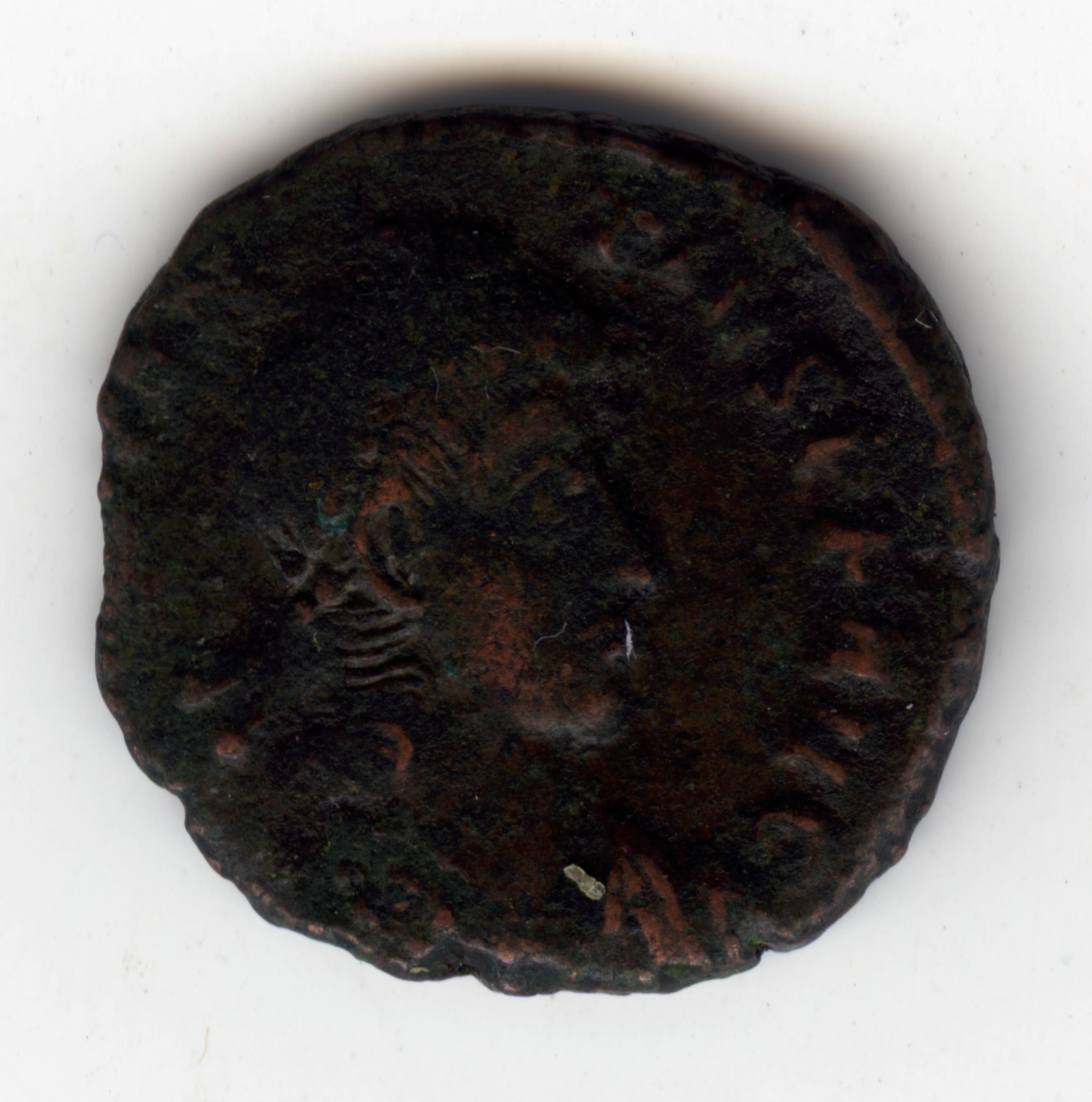
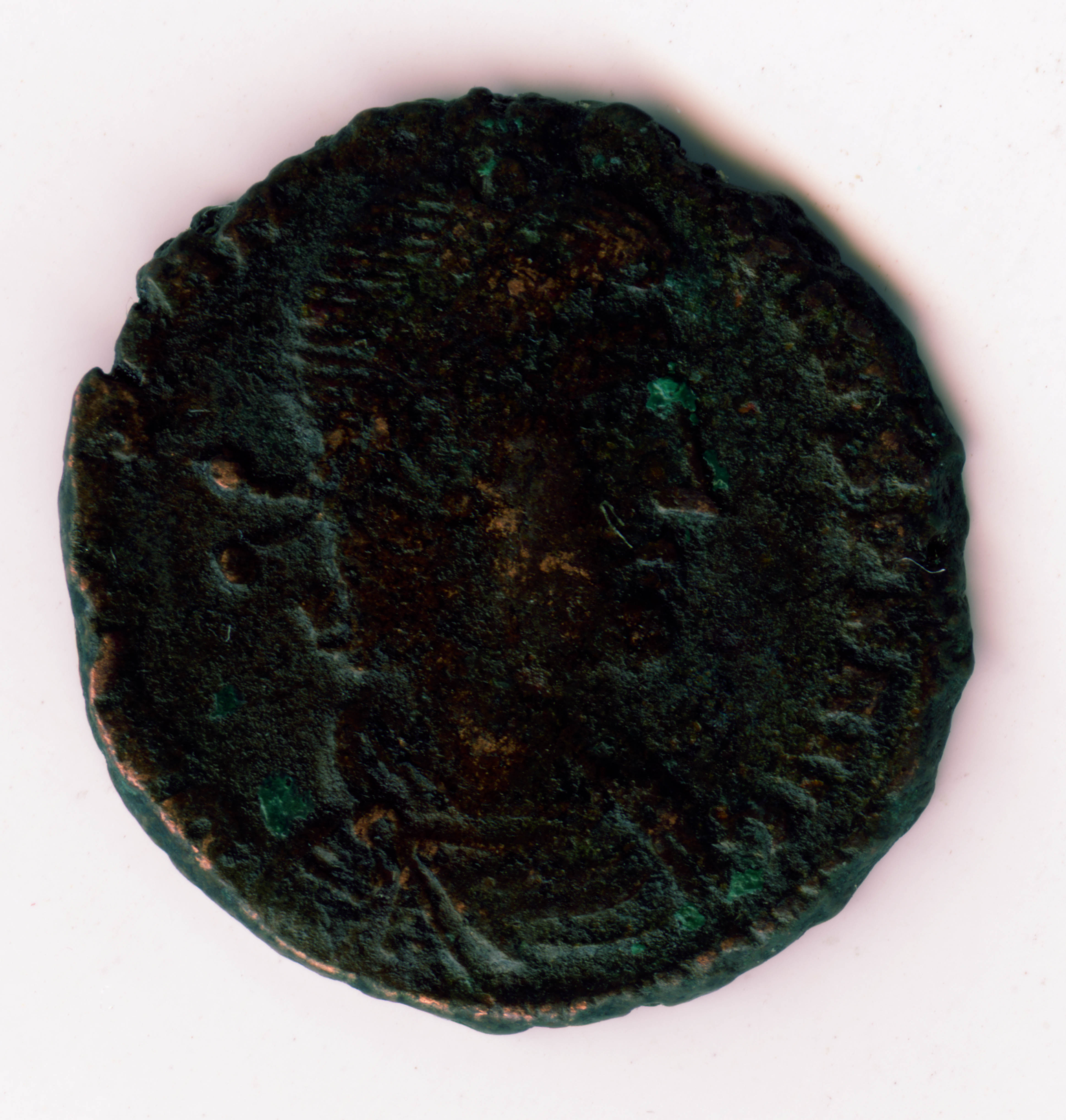
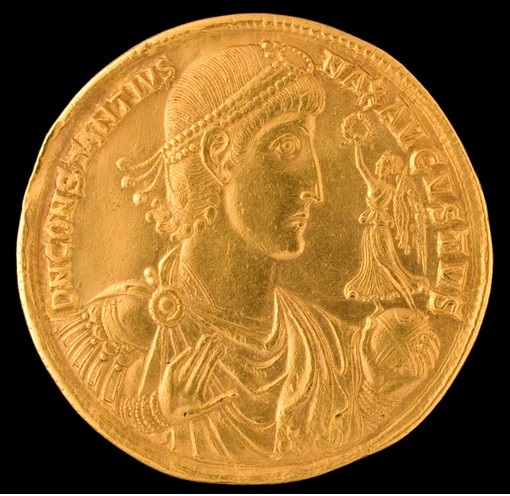
Rights to Wriston Art Center Galleries (ARTstor, Constantius II. c. 347-355 CE)
These three coins depict the portraiture of Constantius II. Although the two bronze coins are difficult to see, the face begins to pop out when the viewer knows what to look for. To begin comparing these coins, all three show Constantius from a side profile and focus mainly on the head. His facial features are relatively distinct, starting with the chin. The coins show Constantius with a shorter chin and weak jawline, making the face round. Another prominent feature is his nose. From what viewers can see on the coins, the nose begins near the top of the eye or eyebrow and then proceeds at a sharp angle to make a half triangle face. Finally, his hair, including the lack of facial hair, is another important note. The fact that these features appear consistently across the three coins is no coincidence. Constantius wanted these features to be his most recognizable.
G. M. A. Hanfmann wrote an article about using ancient portraitures and literature to understand the personality of a ruler. He argued that scholars could use the repeated presence of features in art or literature to interpret personality, physical traits, or meaning behind the art (Hanfmann, 1952). In terms of the portraiture of Constantius, the occurrence of these features on the coins is for a reason. It could be that Constantius looked like this, or Constantius could have used it to show his virtues. Carlos Noreña wrote about how there is almost no overarching canon for virtues in Roman imperial art. As new emperors from different lineages took the emperorship, they chose to depict their virtues in specific ways (Noreña, 2001). Therefore, it is hard to pinpoint what these recurring features of Constantius truly mean to a Roman citizen. However, let’s now look at the portraiture of Constantine the Great, which may shed some light on why Constantius chose to portray himself this way.
Portraiture of Constantine the Great
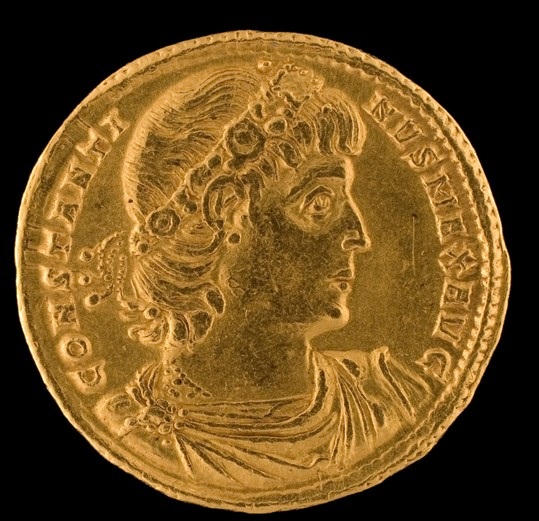
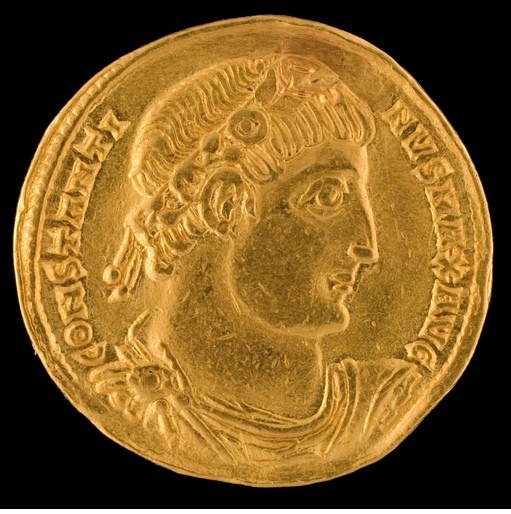
Before Constantine was the tetrarchs, they had their style and canon in Roman art. When Constantine abolished the tetrarchy, he deviated from the style to establish his own imperial portraiture. We can see a clean-shaven man in the side profile. He wears either long or short hair, which probably changed over his rule. His chin and jaw create a round-looking face which is always depicted looking forward.
Comparing the Portraitures
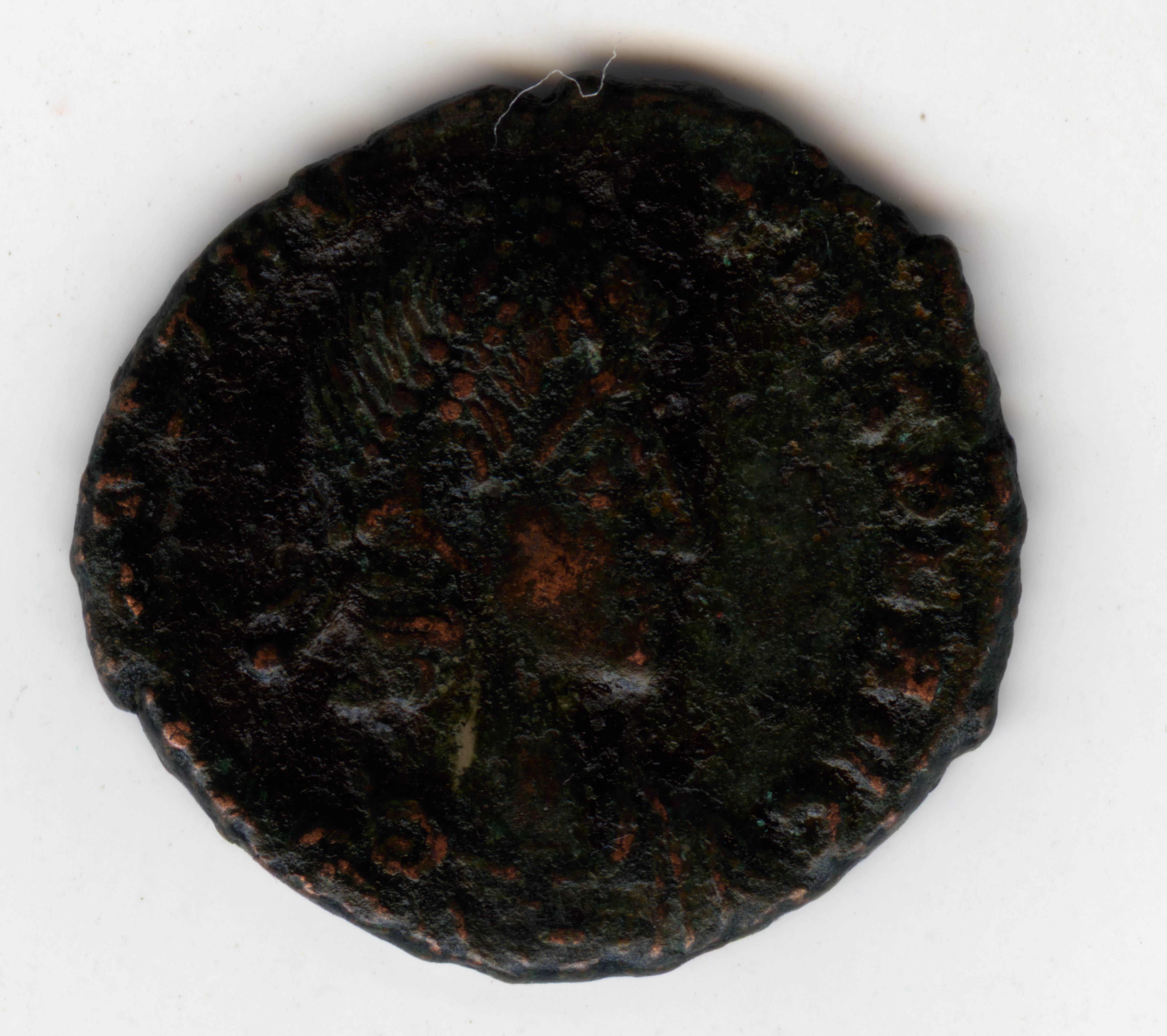
The Obverse side of coin 42 from Auben Gray Collection
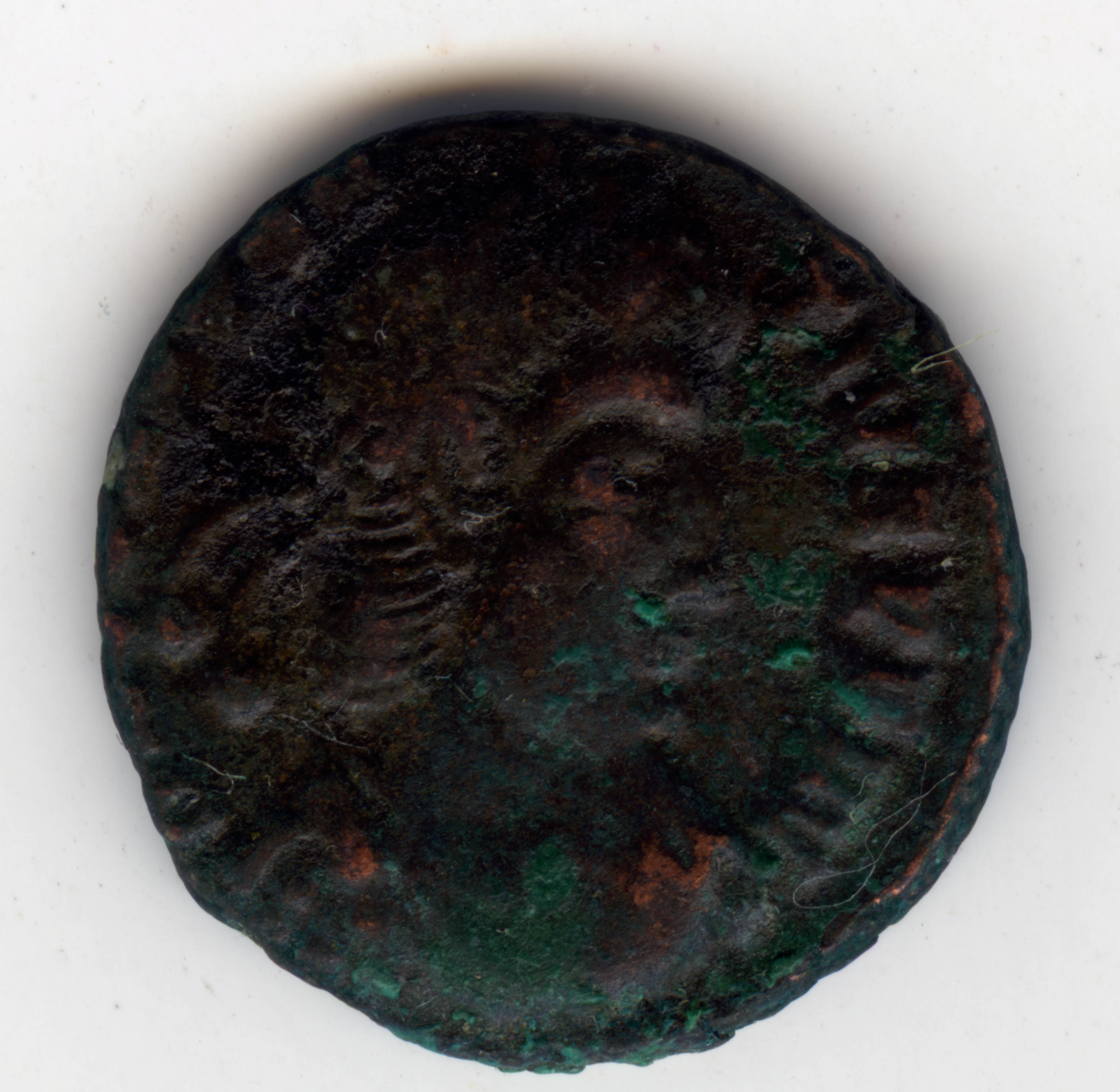
The Obverse side of coin 35 from the Auben Gray Collection
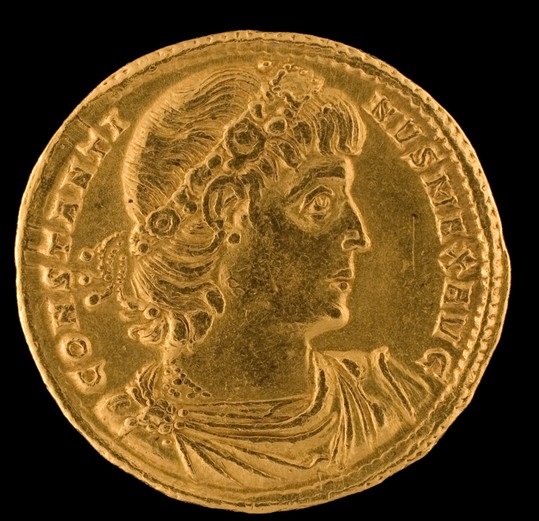
Right to Wriston Art Center Galleries (ARTstor, Constantine I. 336–337 CE.)
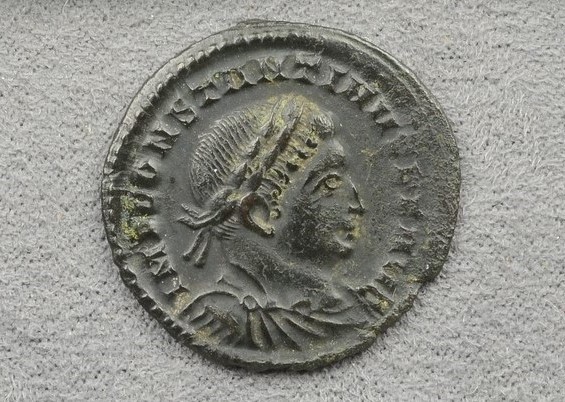
From the John Hopkins Archeological Museum Collection (ARTstor, Copper alloy coin)
Above are examples of coins from Constantius and Constantine. Common themes run through these. First, the chin and jawline are weaker to create a round-looking face with no edges or points. Second, the nose is one continuous line from high on the face to low. Third, they are wearing diadems.
From what we can tell, Constantius decided to follow his father's footsteps and set a canon for the family's reign. The canon includes long noses, round faces, no facial hair, and head adornments. In Roman art, the long nose does not have a parallel, but it could allude to a sense of nobility. Additionally, the same goes for the round face. However, the lack of facial hair is significant.
As mentioned, Constantine wanted to distance himself from the tetrarchy. In imperial art before and during the tetrarchy, the men were bearded; therefore, by choosing to display himself as clean-shaven, Constantine separated himself from the tetrarchy and imposed a new rule.
In the Journal of Roman Studies, Elizabeth Rawson speaks about the significance of diadems to Roman rulers. Rawson writes of Caesar and Augustus, but I feel the meaning of the diadem can carry through the rulers as it is such a public and recognizable object. A diadem symbolizes a ruler supported by the people, like a Roman crown (Rawson, 1975). Therefore, Constantius and Constantine claim a high honor of the Roman emperorship.
I mostly spoke about why Constantine chose to portray himself the way he did because he is the one who started the canon. Constantius portrayed himself similarly to his father so he could legitimize his rule. The people viewed Constantine as a strong leader; therefore, by making his portraiture similar, Constantius legitimized himself and applied any of Constantine’s virtues to himself.
Two Sides to Every Coin
We have mostly focused on the obverse side of Constantius’ coins for this exhibit. However, the reverse portion is where Constantius defines who he is and his virtues. From his history, Constantius II was a general who spent most of his reign traveling and defending his rule from invaders and Romans who wished to usurp him. The reverse side of his coins shows off his military prowess using imperial and religious symbols.
Imperial symbols
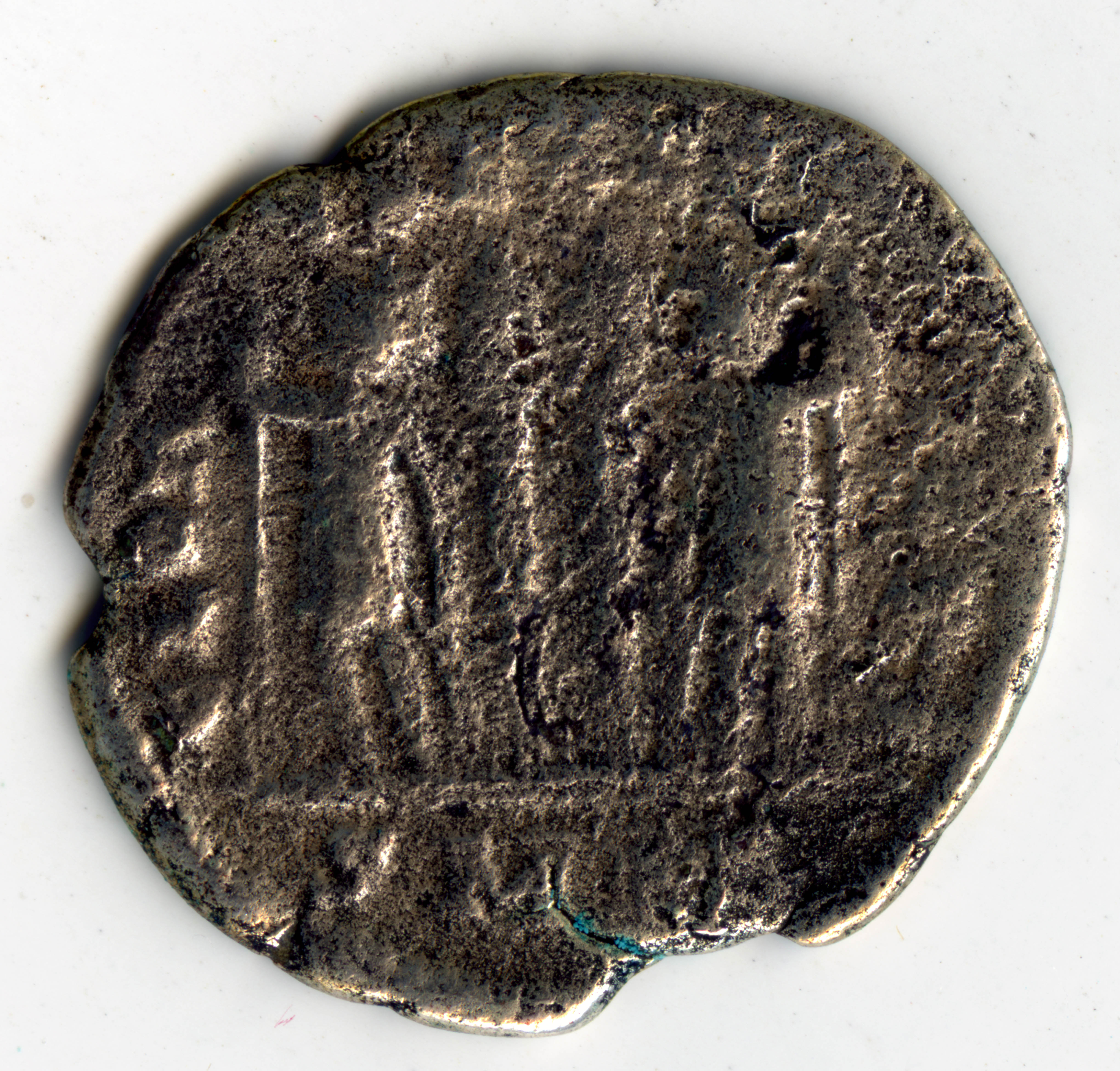
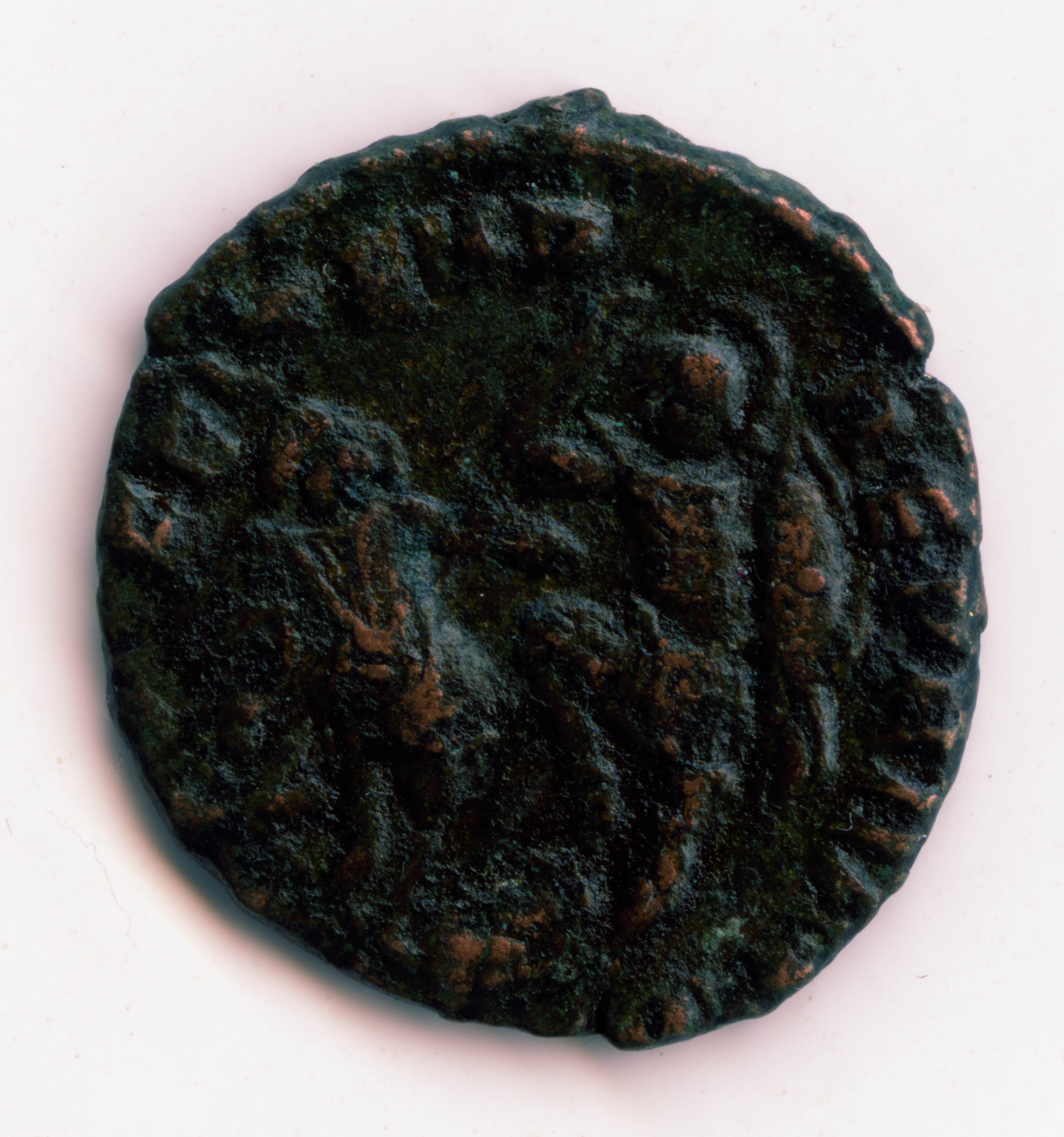
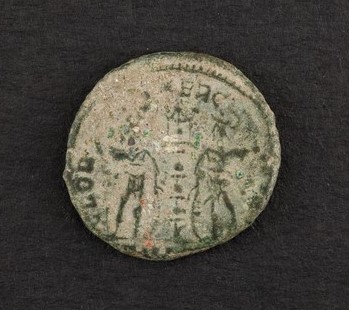
We can classify these coins as imperial because they only deal with soldiers and battle standards.
The loss of standards and military insignia has always been considered, both in ancient and modern times, as the most ignominious and disgraceful event that could befall an enemy; and their recapture was the only means by which such a dishonor could be wiped out. The standard was the centre of the battle, and around it, then as now, the combat rage field was most hotly contested (“THE ROMAN STANDARDS,” 1880).
These Roman battle standards are what imperial-style coins that depict battle focus on. The artists placed the standard between two soldiers in the middle of the coin. This placement implies that the soldiers and, by proxy Constantius are fighting a battle. I cannot identify the standard because depending on whose standard it is, the meaning changes. If it is a Roman standard, it will show that Constantius is fighting to defend the empire. However, if it’s a standard of a foreign power, it shows Constantius’ military prowess and strength. Nevertheless, these coins portray Constantius as a warrior emperor who balances fighting for Rome and domestic policy.
Religious Symbols
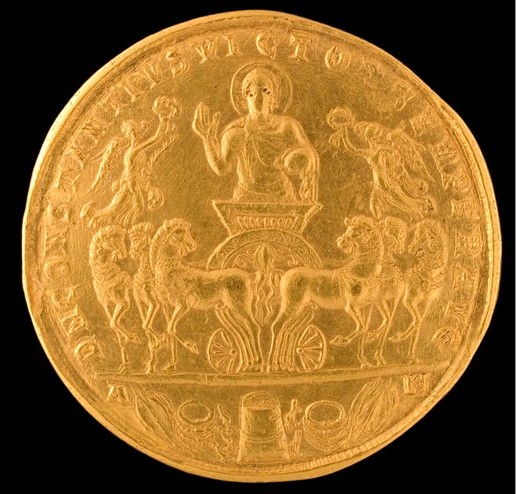
Rights to Wriston Art Center Galleries (ARTstor, Constantius II. c. 347-355 CE)
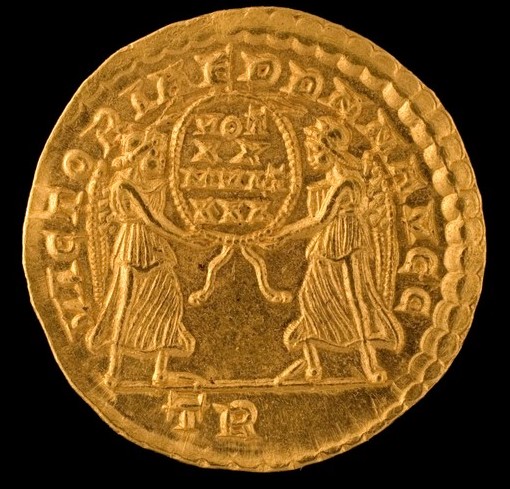
Rights to Wriston Art Center Galleries (ARTstor, Constantius. 337–350 CE)
These coins can be interpreted as an appeal to religions because they lack soldiers or battle standards. Instead, they show two women-like figures called victories. Victories are common in Roman art and myth. For the Roman citizen, invoking them shows the strength of the Roman empire while also appealing to religion. While the two coins share the flanking imagery of the victories, we can interpret the other imagery differently.
On the coin to the left, Constantius places himself in the middle making him the largest figure. Doing this shows that he is the most important figure on the coin, placing him above the victories and almost ascribing him god-like powers. Roman citizens respected the victories in public art; therefore, portraying them as flanking the emperor shows that Constantius had the support of the victories and the power to rule. The coin on the right depicts a votive offering between the two victories. This coin is more relaxed in its reading instead of showing Constantius as this god-like figure. Rather, it indicates the victories accepting an offering from presumably Constantius for many victories. This style creates the idea that the victories and, by extension, gods will protect and watch over Constantius and Rome as long as they are pious and humble. Interestingly, the two coins portray a similar sense but can be read differently. The right one exemplifies the power of Constantius over everything, while the left one shows the humility needed to rule.
Conclusion
We have seen some consistency throughout these coins in how Constantius portrayed himself. He copied many aspects of his father Constantine in his portraiture to solidify a canon for him and his predecessors. In addition, he often depicted military scenes on the reverse side of the coins, creating the idea that either he or the Roman army was all-powerful, which I feel makes sense with how he chose to rule. Constantius wanted to solidify the internal power of Rome after years of internal struggle from factions and unstable rule. In doing so, he spent much of his reign traveling and fighting. Therefore, it only makes sense that his coins would also depict this side of him. As they say, every coin has two sides, and Constantius’ coins show him as a strong warrior and level-headed leader.
Page Completed by Nicholas Mayeux, Rhodes College '24